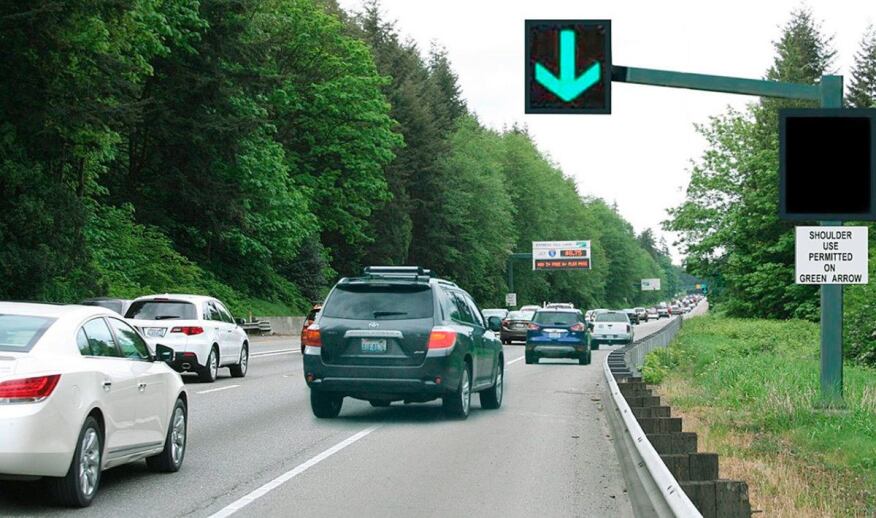
Disaster Management Manual
A manual for practitioners and decision makers!

Disaster Management Manual
A manual for practitioners and decision makers!
Utilizing shoulders of evacuation routes during a disaster can increase traffic flow out of an evacuation area. Part-time shoulder use is a transportation system management and operation strategy for addressing congestion and reliability issues within the transportation system. There are many forms of part-time shoulder use; however, they all involve use of the left or right shoulders of an existing roadway for temporary travel during certain hours of the day or the duration of large-scale evacuations (Figure 4.4.3.2).

Part-time shoulder use is a form of active traffic management which modifies roadway conditions and controls – in this case the number of lanes – in response to forecast or observed traffic conditions. It may be used in combination with other traffic management strategies, such as overhead lane control signs, dynamic speed limits, and queue warning.
Although part-time shoulder use can be a very cost-effective solution, it may not be an appropriate strategy where minimum geometric clearances, visibility, and pavement requirements cannot be met, or it may have an adverse impact on safety. Part-time shoulder use is primarily used on freeways. Typically, the use is temporary for part of the day or during the evacuation phase of an incident, and the lane continues to operate as a refuge/shoulder when not being used for these travel purposes.